Covid-19: Northern Ireland's summer surge figures make for grim reading
- Published
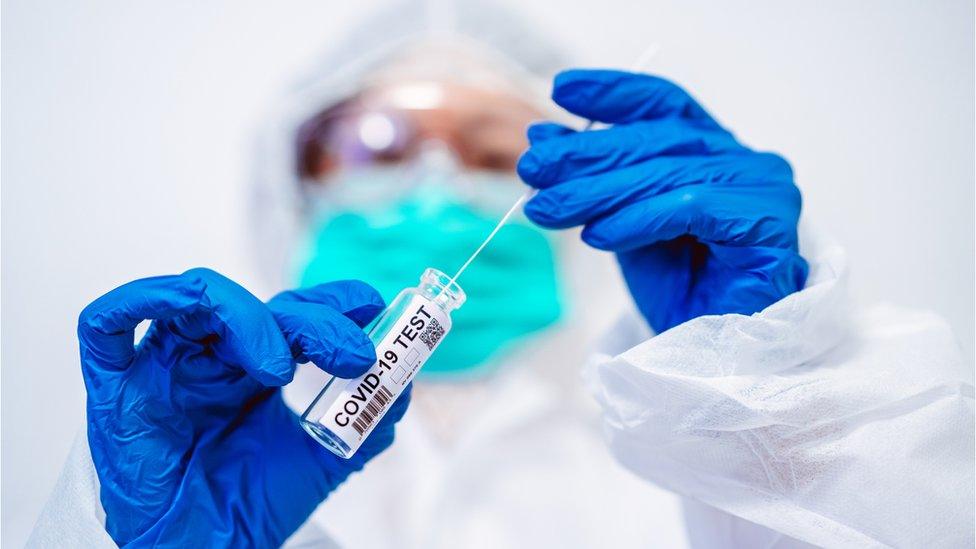
Northern Ireland recorded its highest number of Covid cases in a single day on Friday
The statistics associated with the coronavirus pandemic in Northern Ireland paint a grim picture.
Northern Ireland has the highest infection rate and lowest vaccination rate in the UK.
And since the current swell in cases began at the start of July, we have had the highest death rate in the UK.
Infection rates and cases
The number of Covid cases in Northern Ireland has been heightened for about a month.
On Friday, the Department of Health (DoH) reported its highest number of Covid cases in a single day - just shy of 2,400.
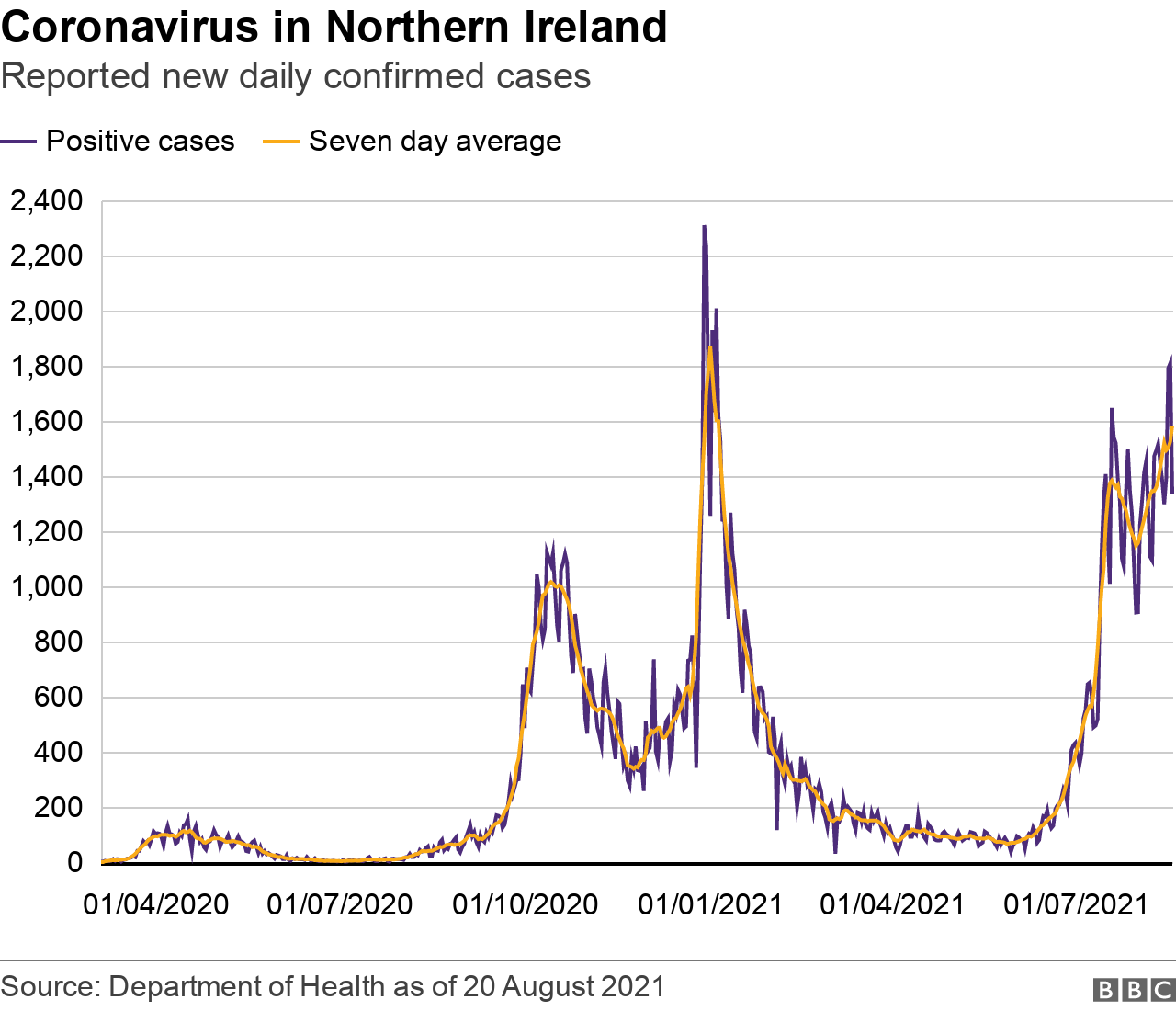

Northern Ireland also has a considerably higher Covid-19 infection rate than anywhere else in the UK.
Our infection rate is also more than double the Republic of Ireland's equivalent rate.
These are the infection rates for the seven days up until 15 August:
England - 310.4
Scotland - 193.7
Wales - 238.8
Northern Ireland - 525.2
Republic of Ireland - 251.2
It is important to point out that Northern Ireland having a much higher rate is now a trend - it has been ongoing for a number of weeks.
England, Scotland and Wales all saw spikes in cases at the start of July, shortly before Northern Ireland's rate started to rise - we were later into what we can now call the summer surge.
The difference, however, is that in Great Britain those increased infection rates fell again - relatively quickly.
Northern Ireland saw the increase really start to gain momentum around the middle of July - but there has not really been much of a fall.
The Department of Health dashboard, external indicates that for an entire month (15 July-16 August), more than 1,000 people have been testing positive for the virus each and every day.
Even at the start of 2021, around the peak of the second wave, we did not have such a prolonged period where the numbers of positive cases were so high.
So why is Northern Ireland's rate so high? And why is it remaining so?
It is difficult to say from the numbers alone, but it is likely to be a combination of various factors.
The Delta variant is obviously playing its part in the spread through Northern Ireland and is thought to be accounting for about 90% of new cases.
But that does not explain Northern Ireland's runaway infection rates, as the variant is well established in Great Britain and the Republic of Ireland.
Northern Ireland's lower uptake of the vaccine (more on this below) will almost certainly be a major factor.
But it is hard to argue that it explains it completely.
Relaxation of rules and restrictions would be expected to lead to a rise in case numbers.
But that does not necessarily explain the month-long rise that we have seen.
The age profile of people getting the virus is certainly significant.
Of the positive tests taken in the last week, almost two thirds (64.6%) were from people under the age of 40.
There is a saying amongst statisticians: "Correlation is not causation."
But the facts are inescapable - positive cases are more prevalent in the same age groups where vaccination is lower.
There is also another possible factor: behaviour.
Do people in Northern Ireland adhere to advice about social distancing and mask wearing to any greater or lesser degree than people in Great Britain or the Republic of Ireland?
It is impossible to say from the data. The author leaves that judgement call to the reader's discretion.
Hospitalisations
The number of patients in Northern Ireland's hospitals with Covid-19 has been consistently about 400 for about two weeks.
It has fallen ever so slightly in recent days to 388, but these numbers still represent a significant challenge to medics dealing with the virus.
Again, the age profile of some of these patients is significant.
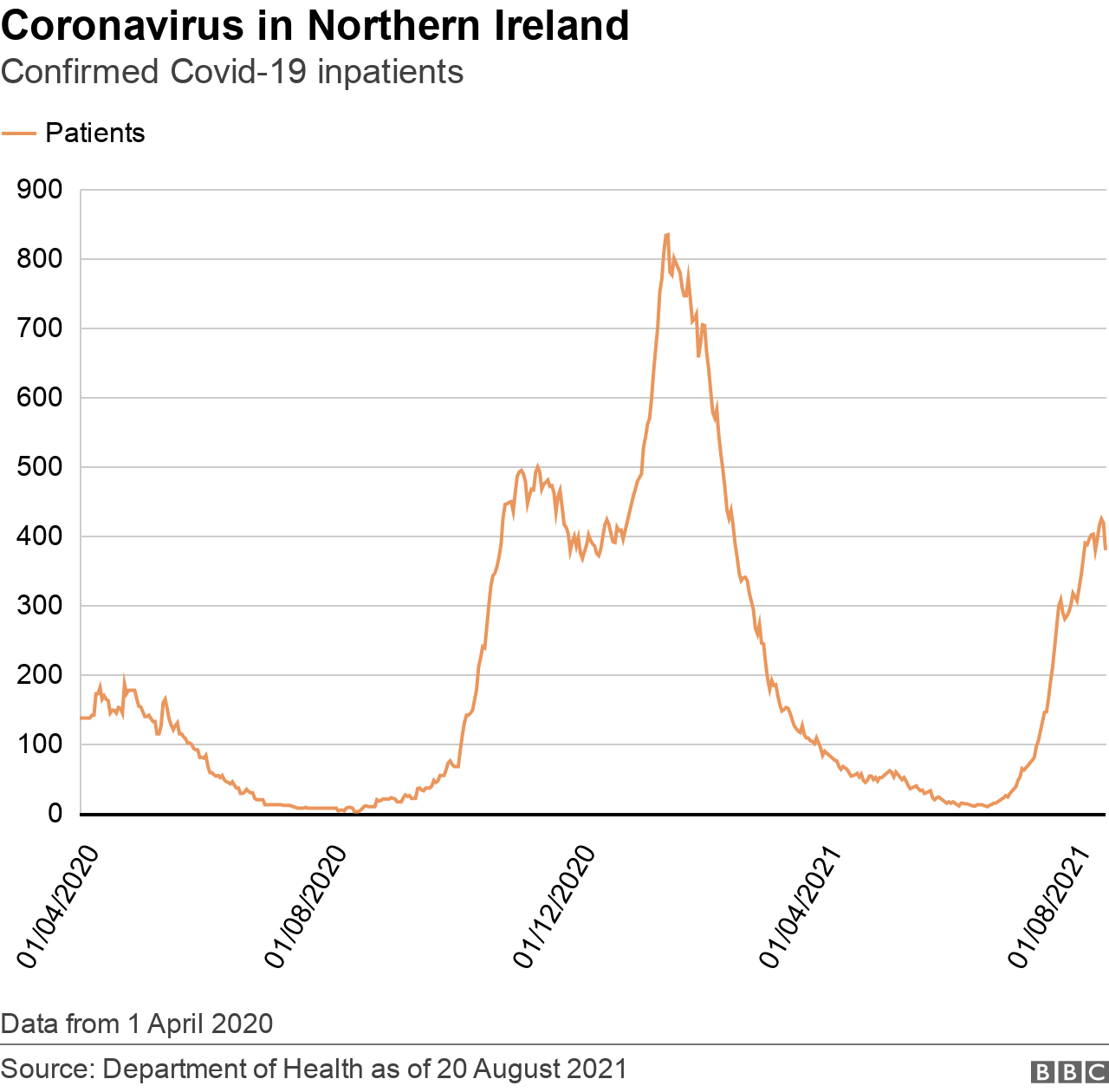

It is true that the majority of Covid-positive inpatients are over the age of 70. This would be expected.
However, more than 10% of the people in hospital in Northern Ireland with Covid are under the age of 40.
That 10% might not seem like a lot, but consider that this proportion was only about 3% at the peak of the winter surge.
In short, a greater proportion of people in hospital with the virus are younger adults.
One positive note is an apparent fall in hospital admissions over the past week. That said, this fall is very slight and might not be sustained - especially if infection rates continue to rise.
The latest number of Covid patients requiring intensive care (ICU) is 47. It is a number that has been on a general upward trend now for about five weeks.
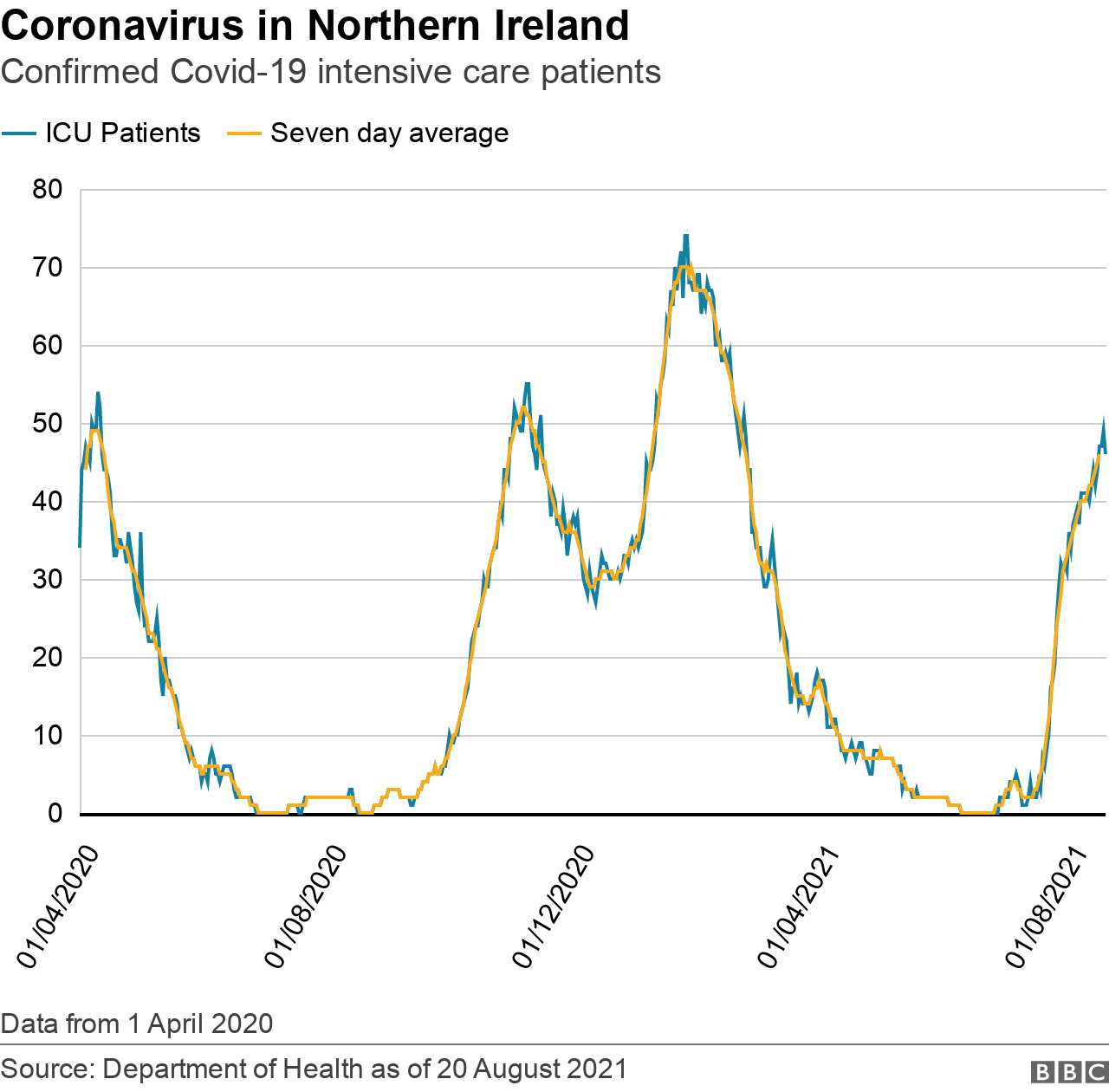

Consistently throughout the pandemic, the number of Covid-positive ICU patients has mirrored rises and falls in the overall numbers in hospital with the virus.
It is no different now.
However, there do seem to be some differences in the type of patient ending up in ICU.
The Intensive Care National Audit and Research Centre, external (ICNARC) routinely publishes a Northern Ireland-specific report on Covid-19 in intensive care patients.
The latest report was published on Friday. Much of the detail is of a technical, medical nature. But it reveals two startling facts.
The age profile of Covid-patients in Northern Ireland's intensive care units has dropped considerably - the average age has dropped from 60 to 50.
And there has been a substantial increase in young women who are Covid-positive (under 40) requiring intensive care.
Deaths
Northern Ireland has seen an increase in Covid-related deaths over the past month or so.
This is borne out by figures from the DoH and from the statistics agency Nisra.
Looking at deaths by population reveals another stark fact about the pandemic in Northern Ireland.
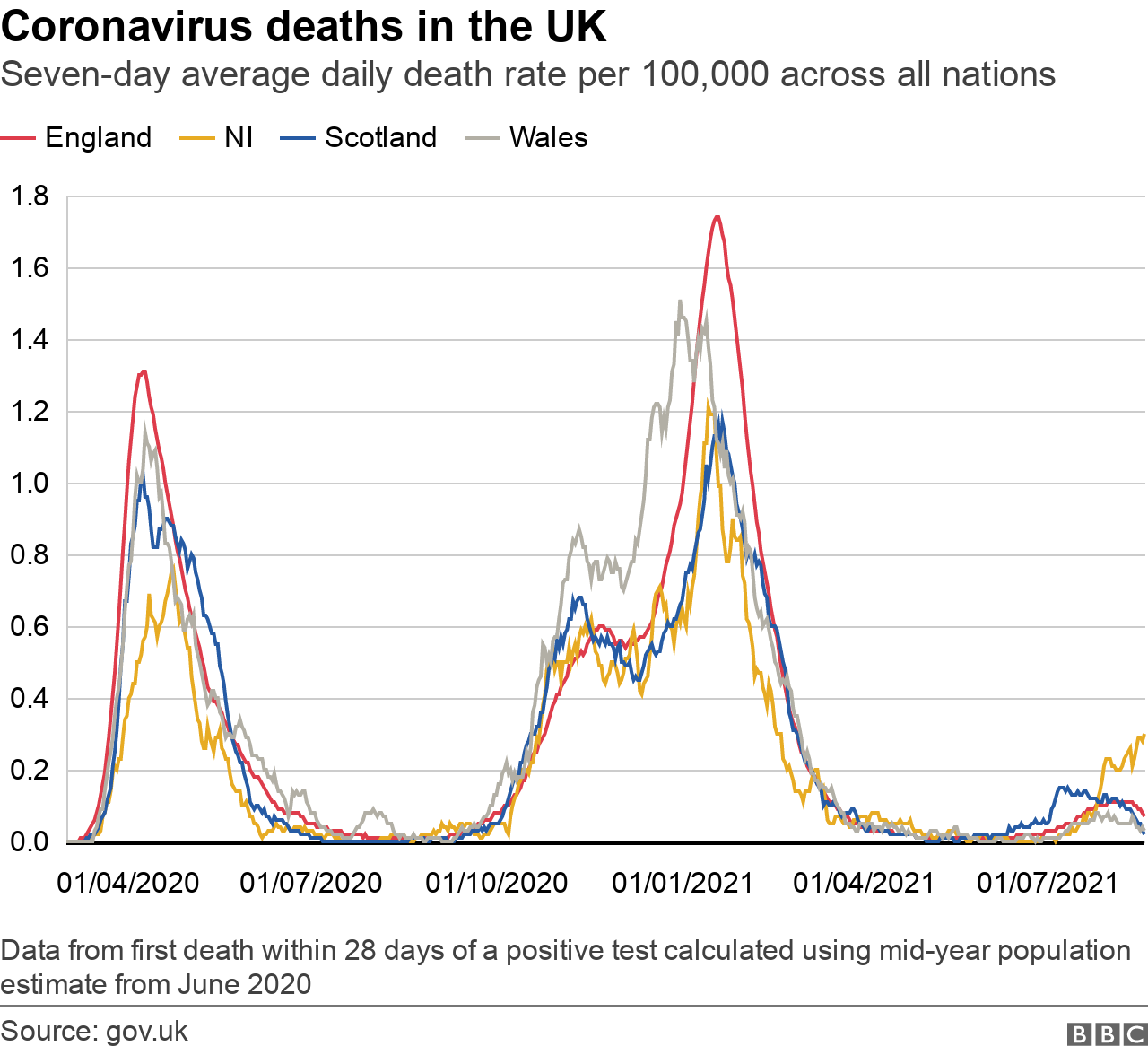

Compared to England, Scotland and Wales, Northern Ireland's death rate has been considerably higher in the summer surge.
The rate in Great Britain has actually been falling, while it continues to rise in Northern Ireland.
It is noteworthy that one of the deaths recorded most recently by the department is of someone aged between 20 and 39.
Covid-related deaths in people this young remain very rare.
According to the Department of Health's data, more than 94% of Covid-related deaths in Northern Ireland have occurred in people aged 60 and over.
Vaccinations
The Department of Health has put much effort into encouraging unvaccinated people to come forward for a jab this weekend.
Northern Ireland was once one of the world's leaders in vaccine rollout.
Our performance has been solid, but much of the world has caught up and Northern Ireland now lags behind the rest of the UK and the Republic of Ireland in terms of first doses.
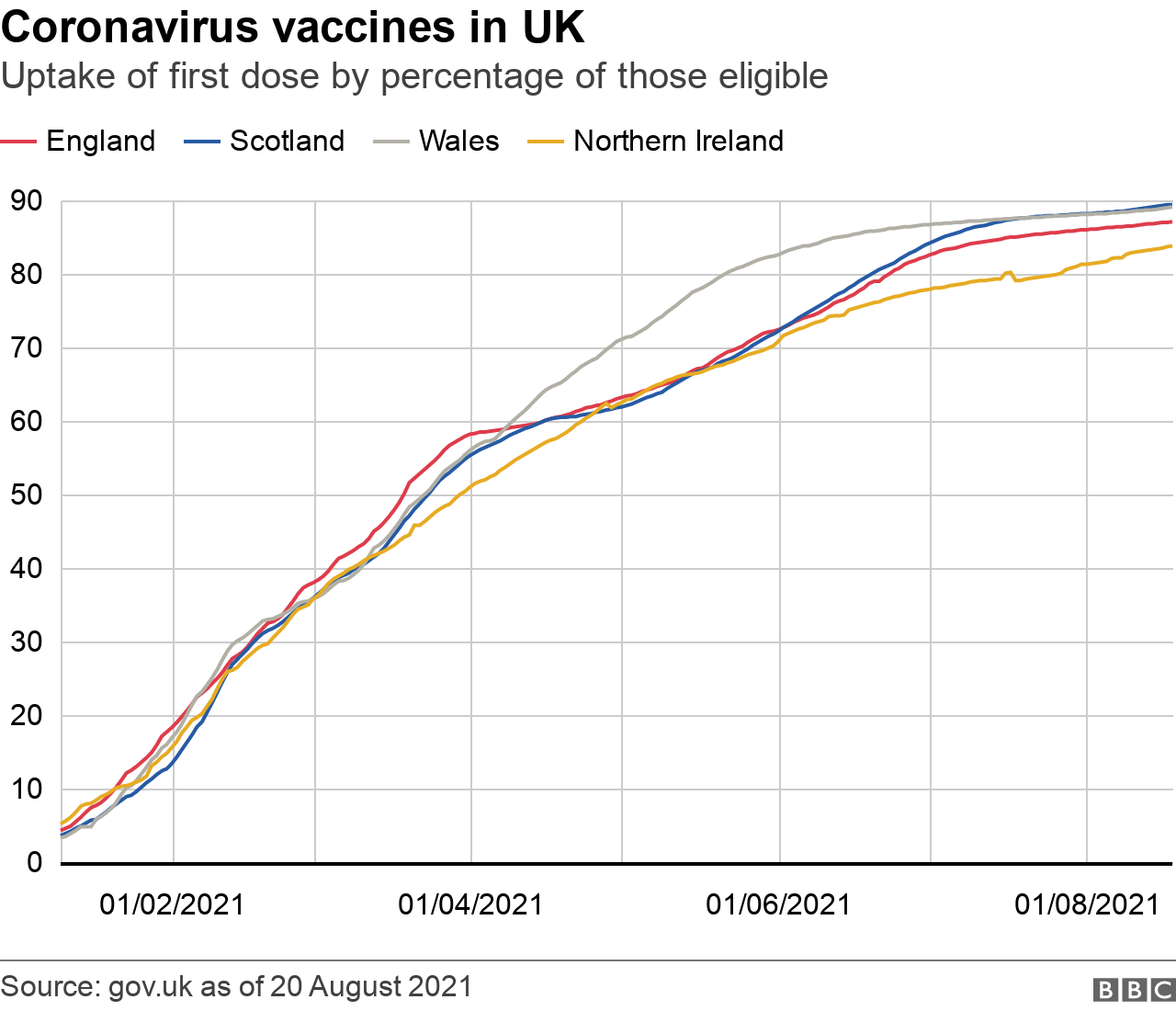

The UK government has slightly changed the way it records vaccination progress. This is to take in the fact that 16 and 17 year-olds are now eligible to receive the jab.
So far, 1,258,640 people in Northern Ireland have received at least one dose of coronavirus vaccine.
Here are the latest percentages for the population aged 16 and over to have received a first dose:
England - 87.2
Scotland - 89.5
Wales - 89.3
Northern Ireland - 83.9
It is a little more difficult to compare to the Republic of Ireland, because vaccinations have opened to children aged 12 and over.
However, more than 90% of the adult population in Ireland has received at least one dose of the vaccine - putting it ahead of Northern Ireland.
The rollout of second doses south of the border has also been impressive.
Of particular concern to health authorities has been Northern Ireland's lower vaccine uptake among people under the age of 40.
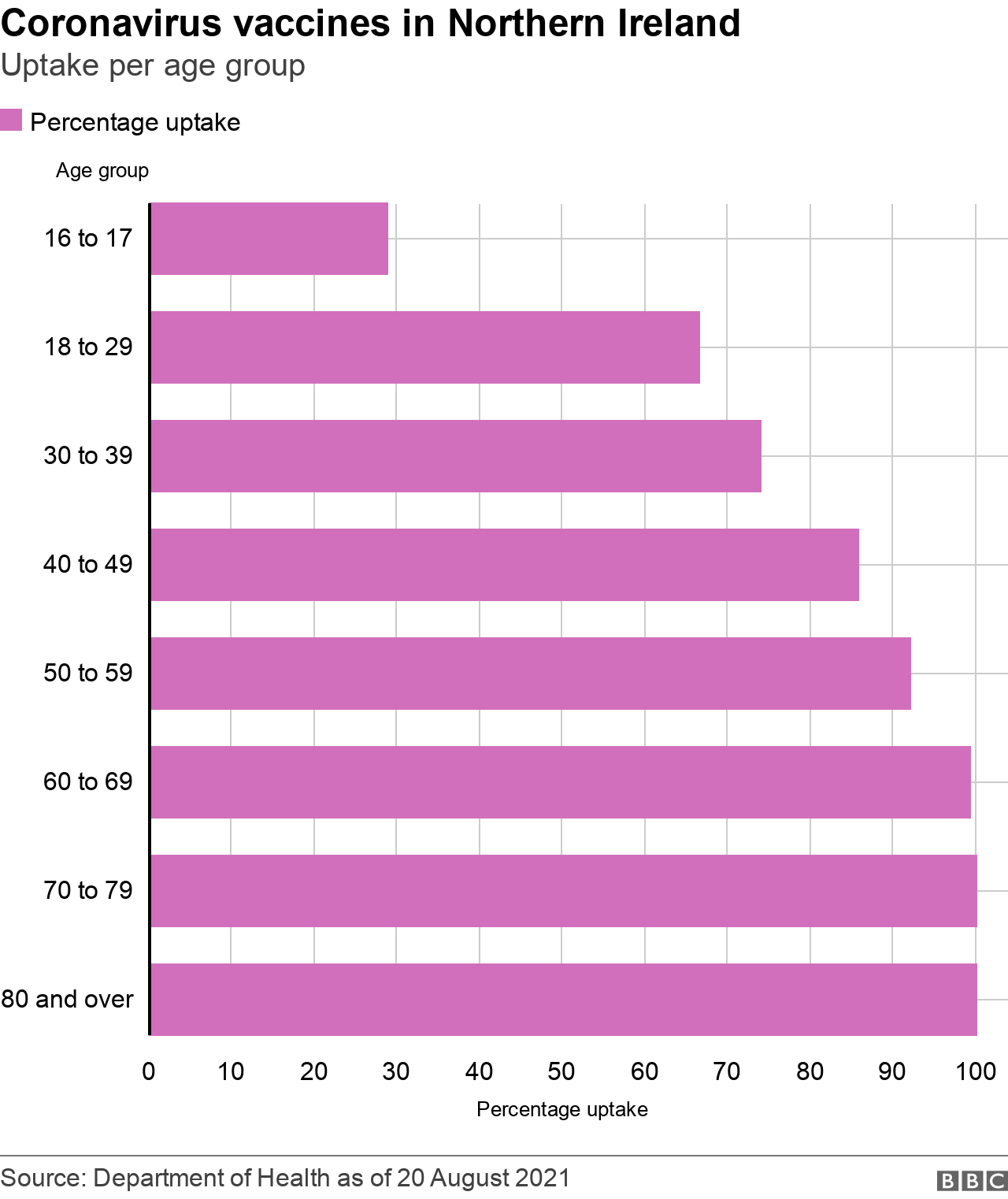

Those age groups have a lower uptake rate when compared to Scotland and Wales (it's a bit harder to compare to England).
Progress in the 18-30 age bracket has also been very slow over recent weeks.
Almost 30% of 16 and 17-year-olds have had a vaccine dose, although many of these received the jab because they were eligible under different criteria earlier in the vaccination programme.
The Delta variant is also having an impact on the vaccination roll-out.
Previously, experts put the target for community immunity at 85% of the population having Covid anti-bodies.
However, with the Delta variant, it is thought this target might have to be as high as 95% - a difficult one to hit.
Another issue might be the degree to which protection afforded by the vaccine "wanes".
Research in this area continues, but it is expected that booster jab programmes will be rolled out across the UK in the autumn.
Related topics
- Published20 August 2021
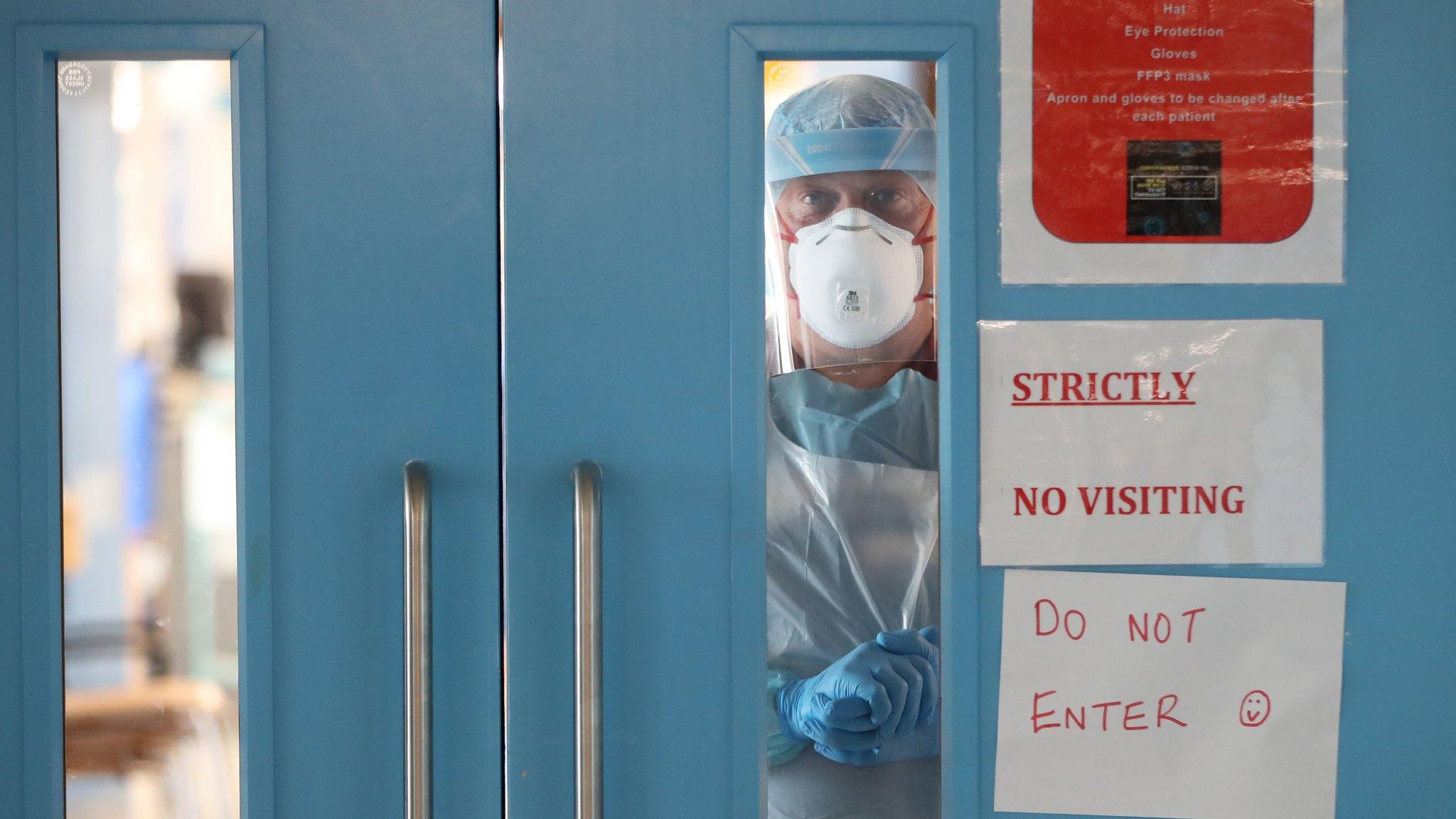
- Published19 August 2021
